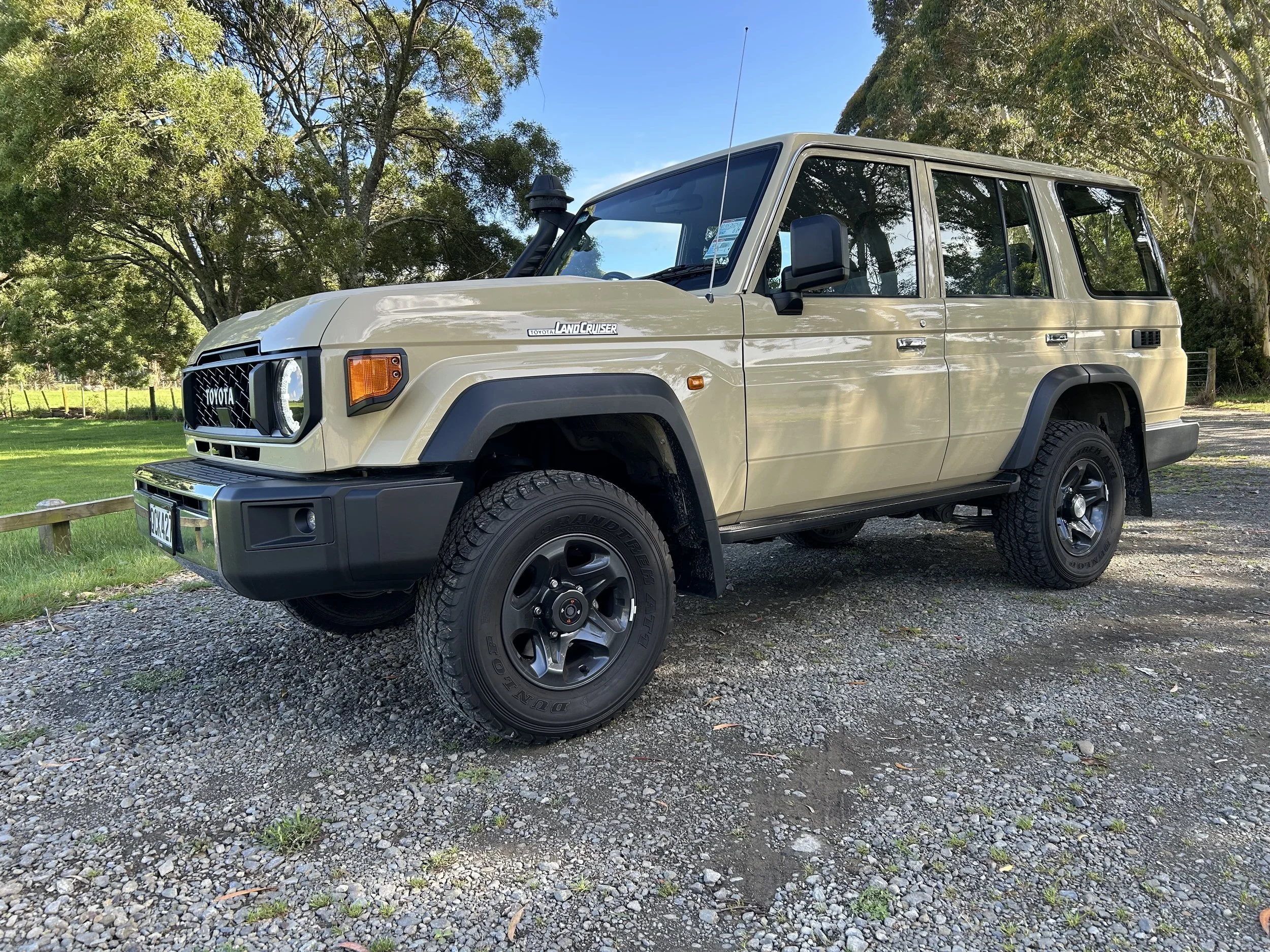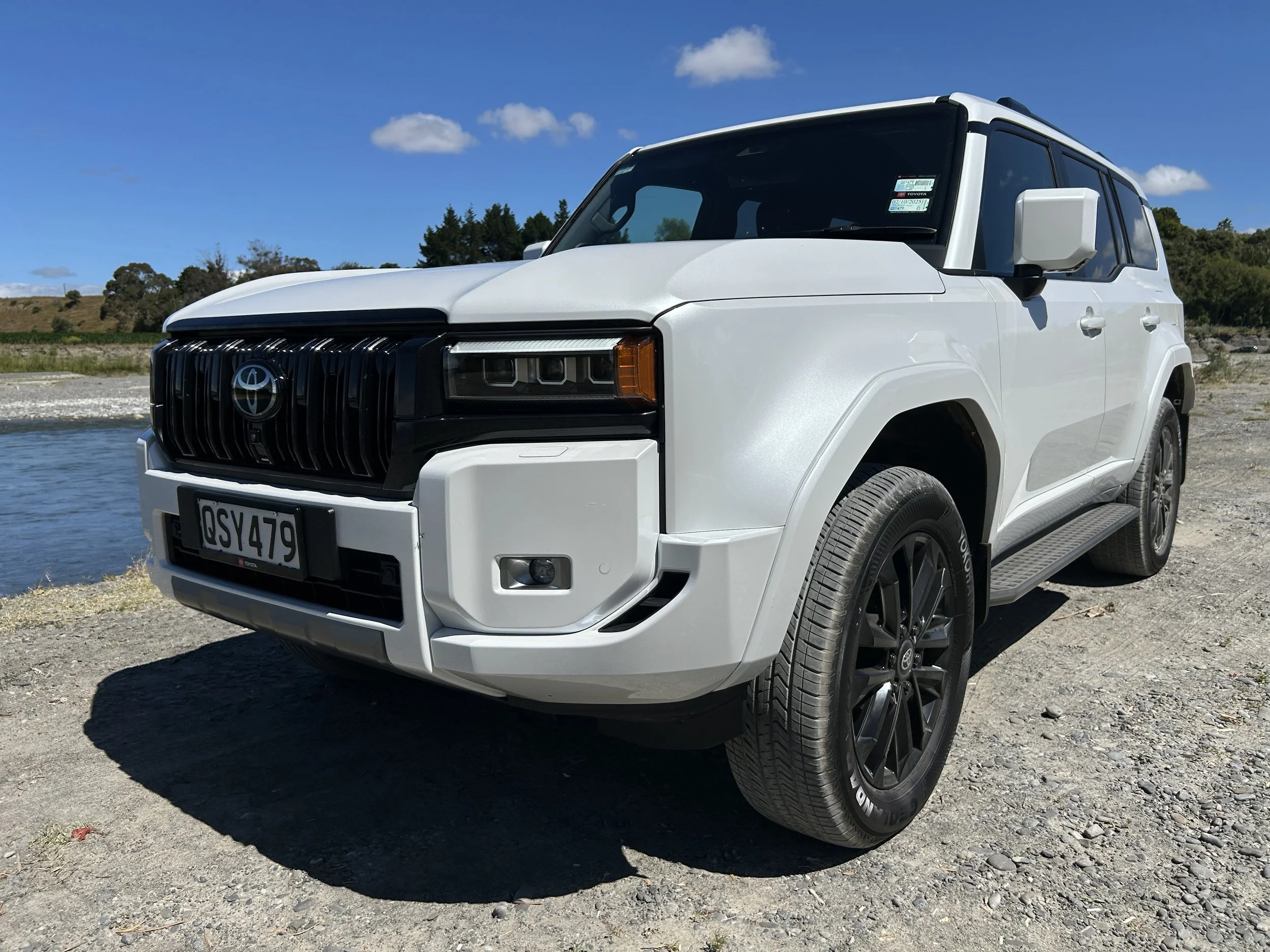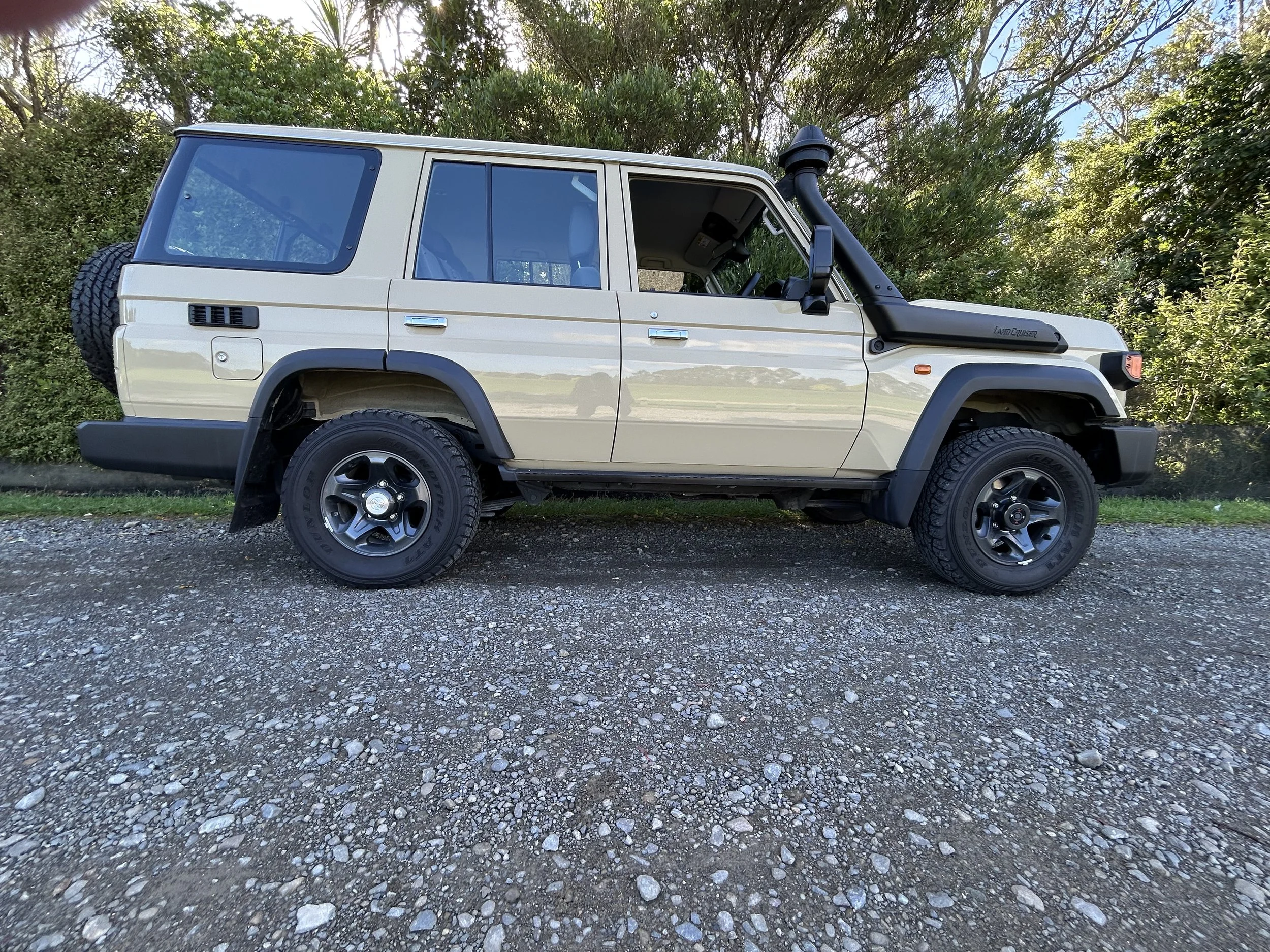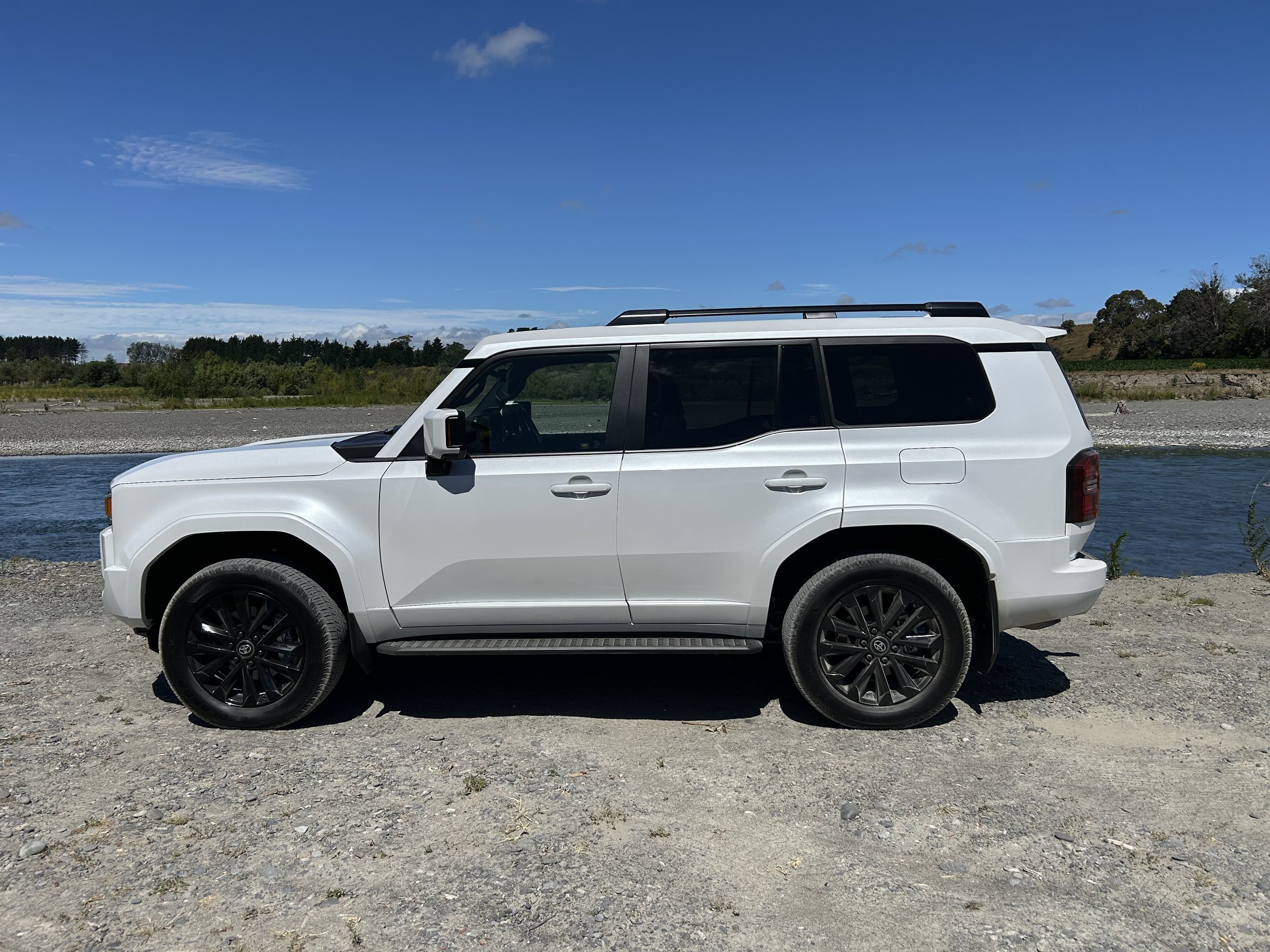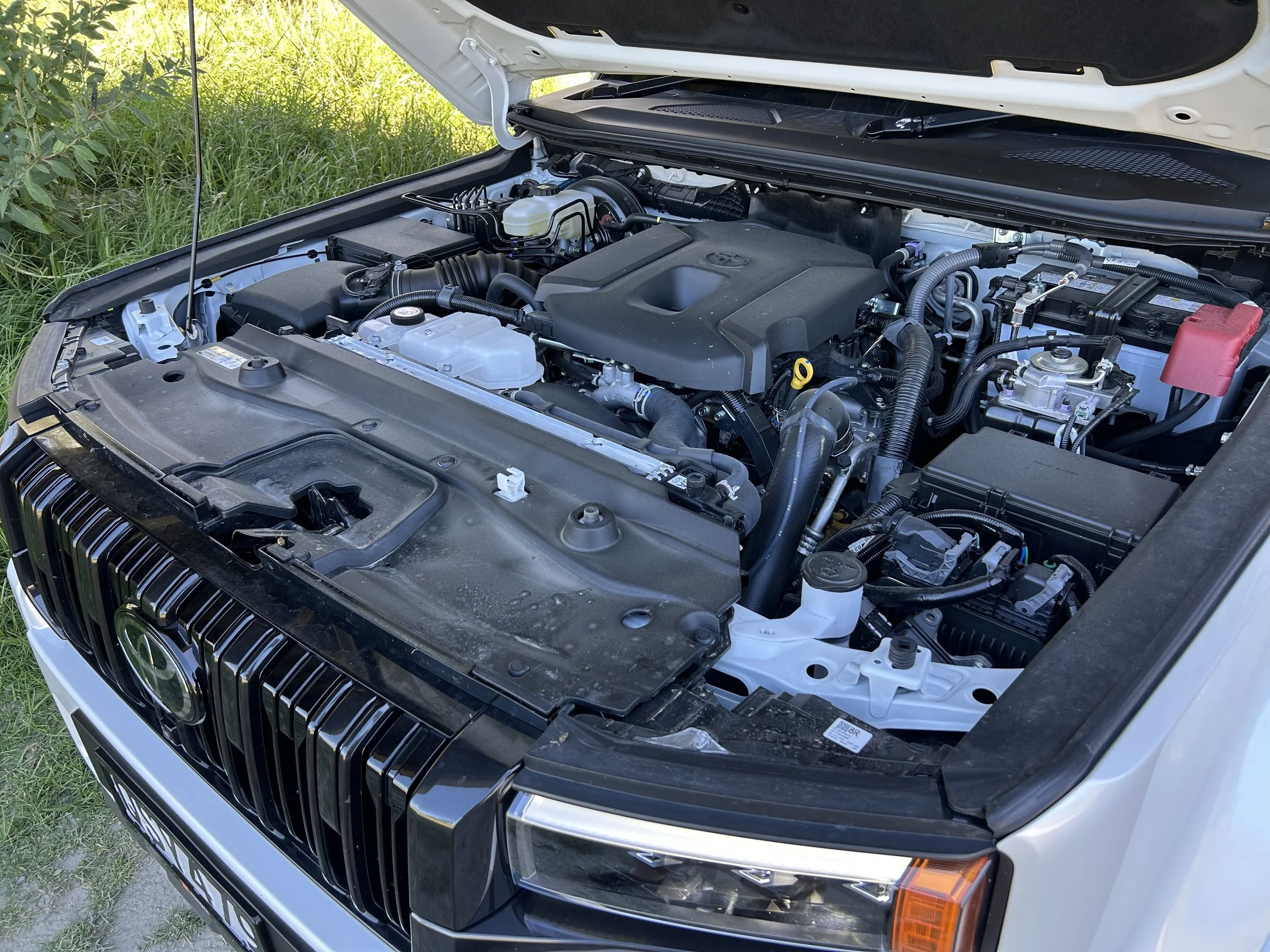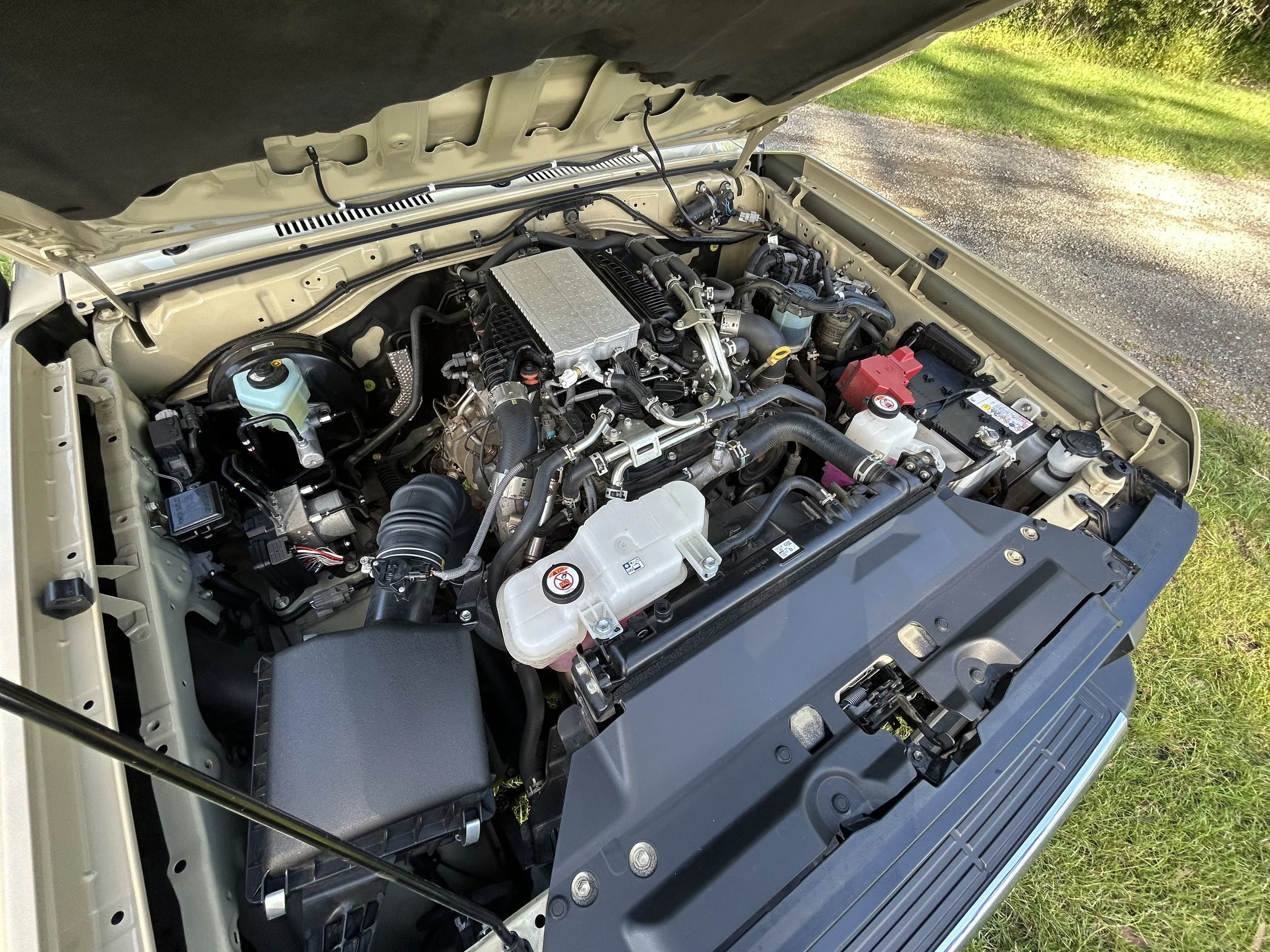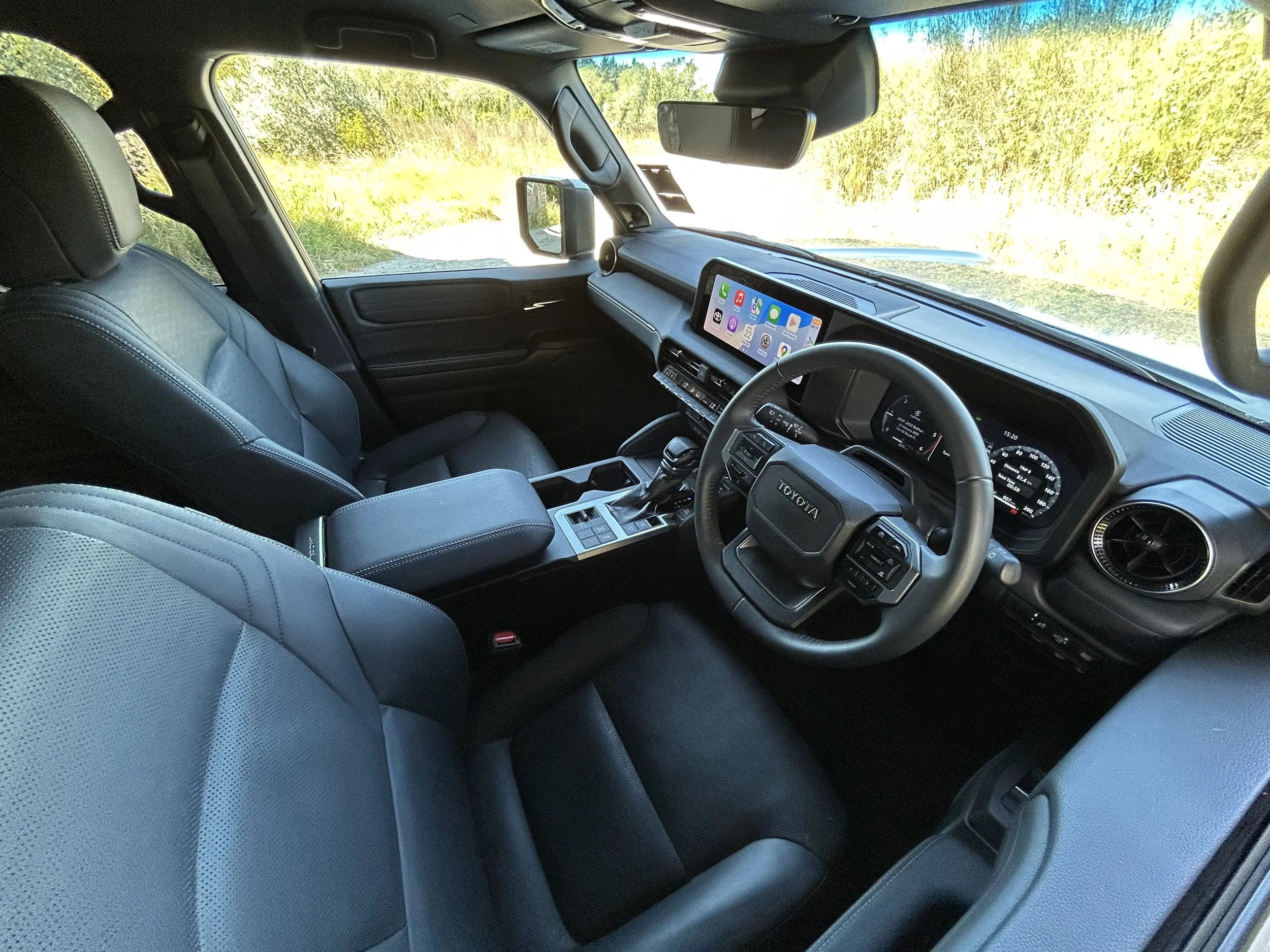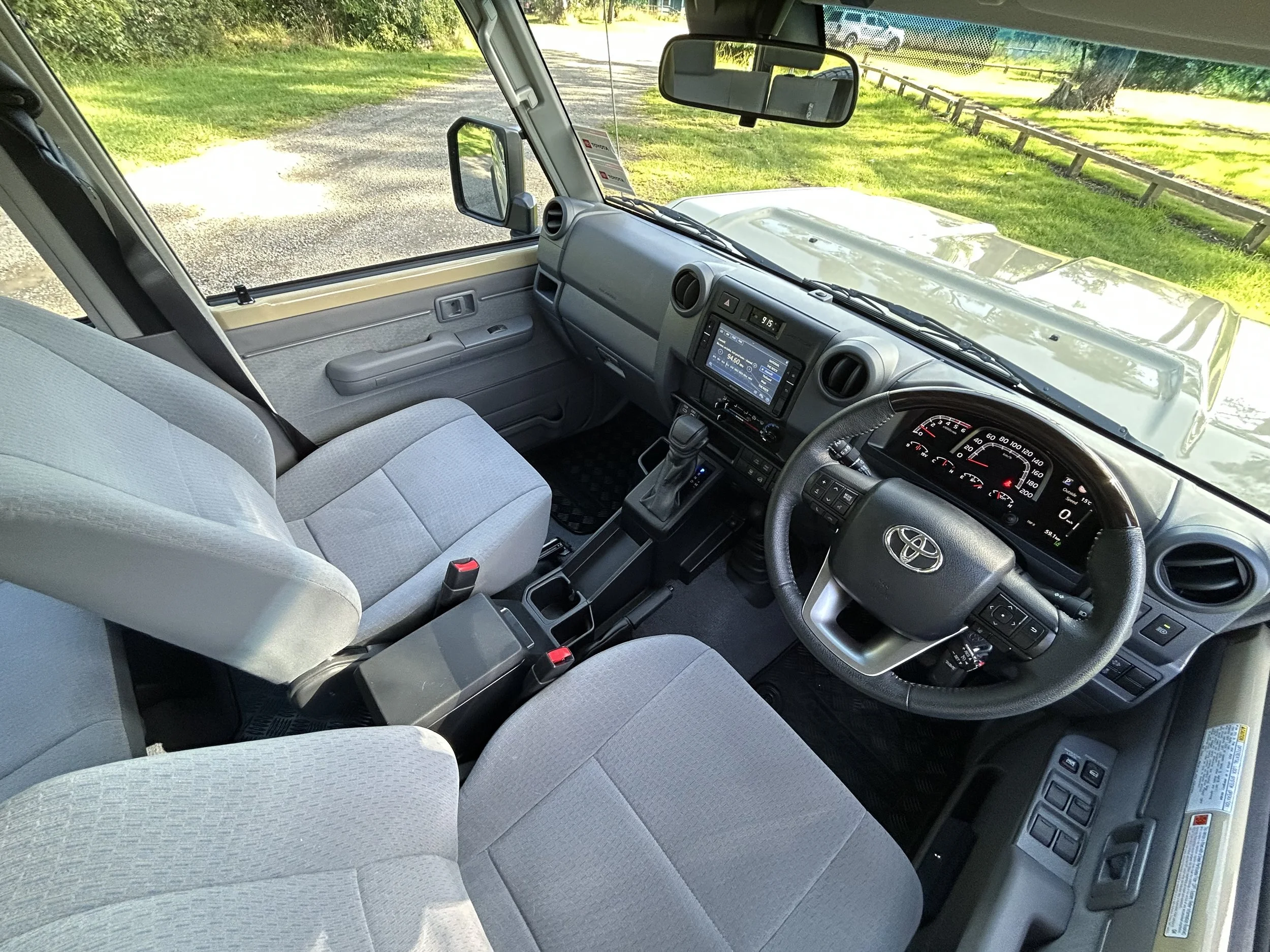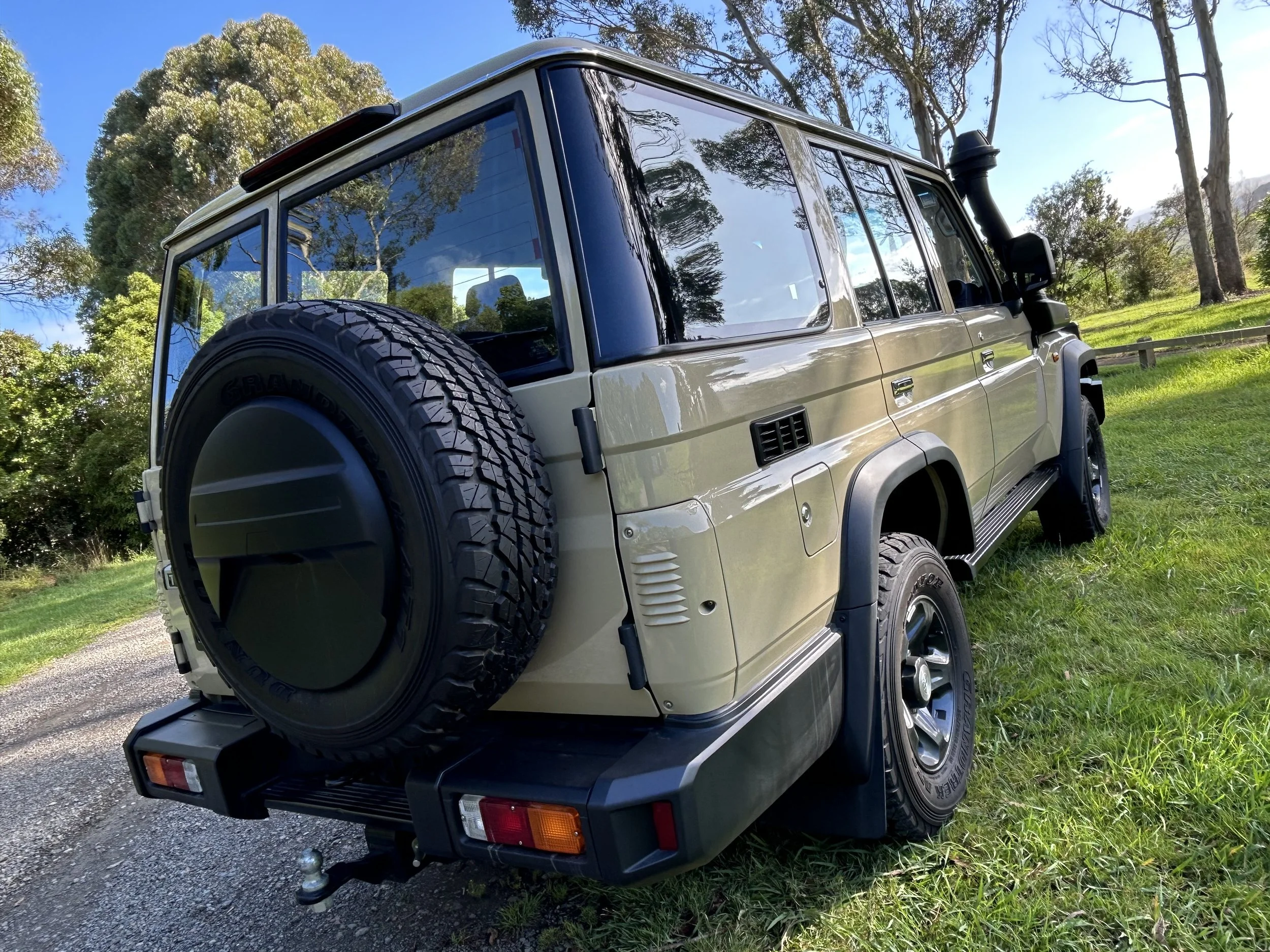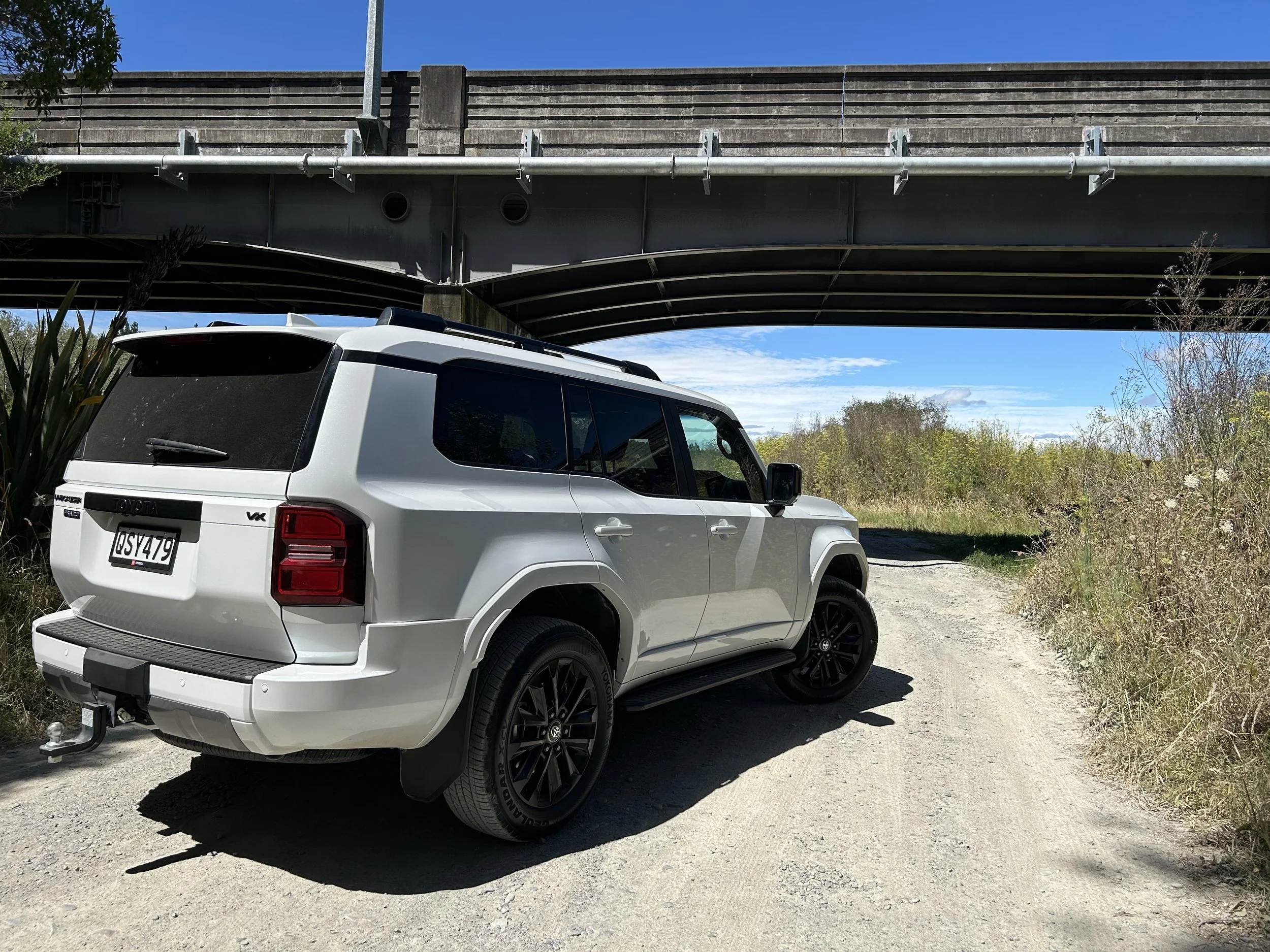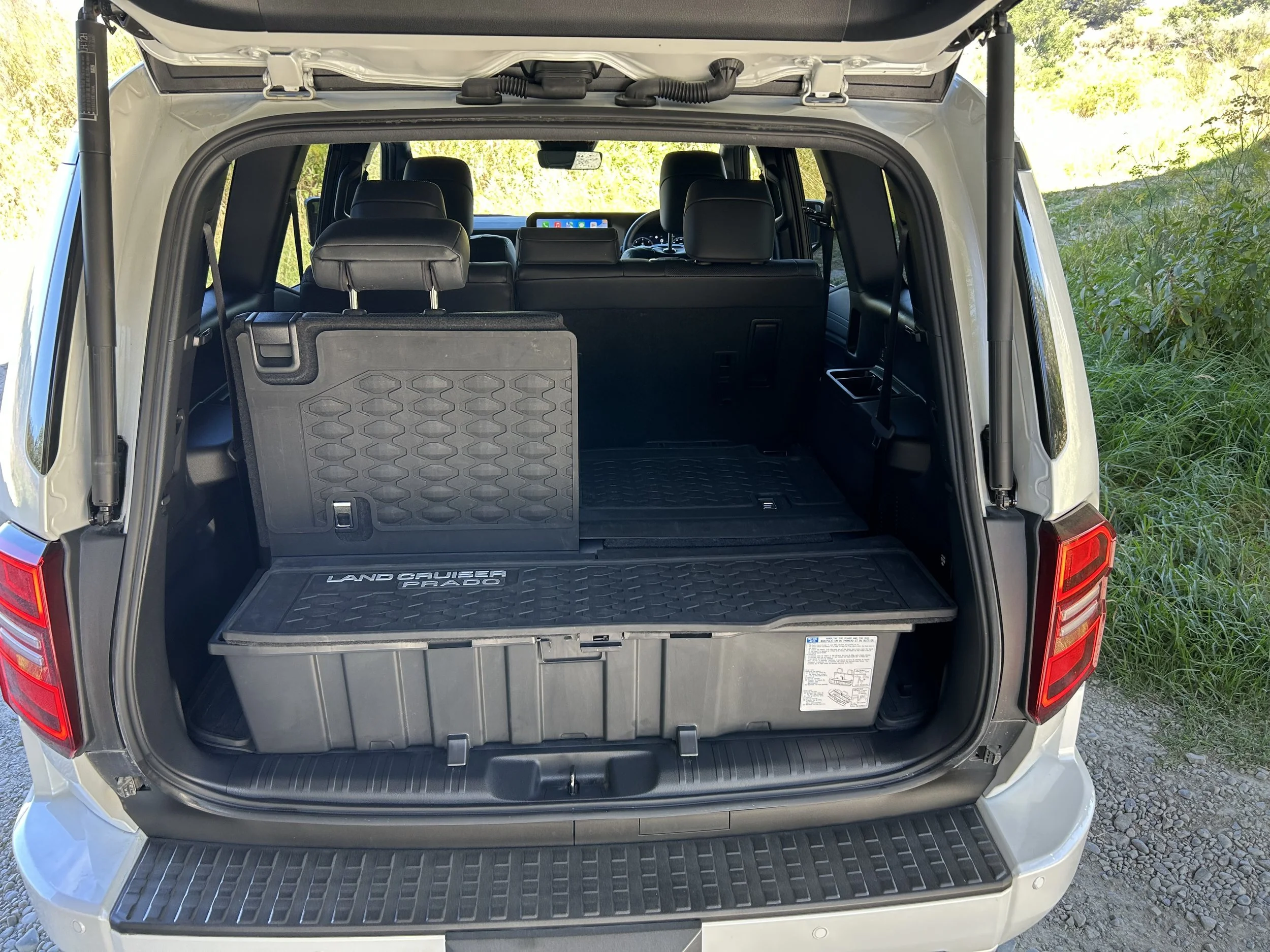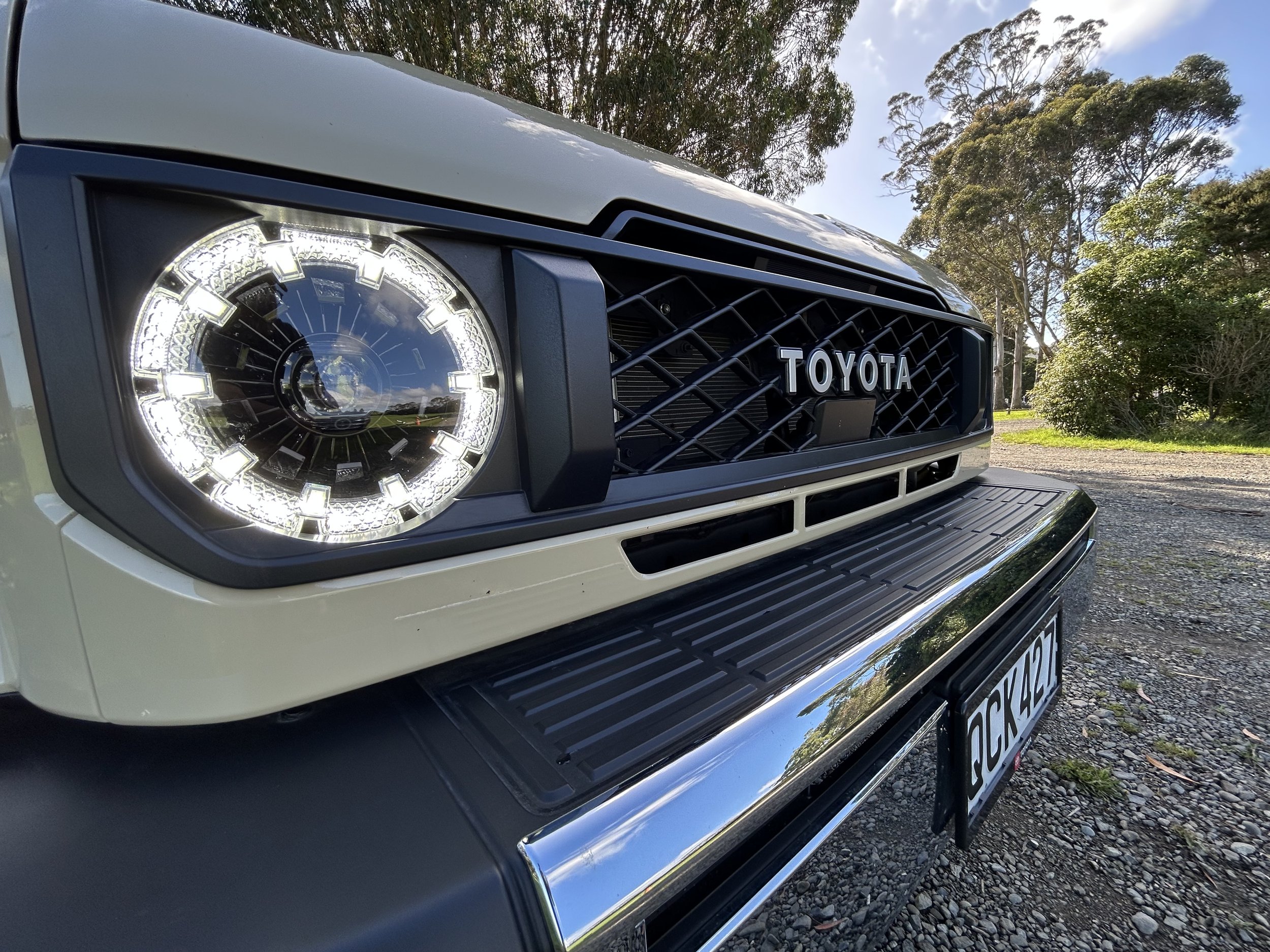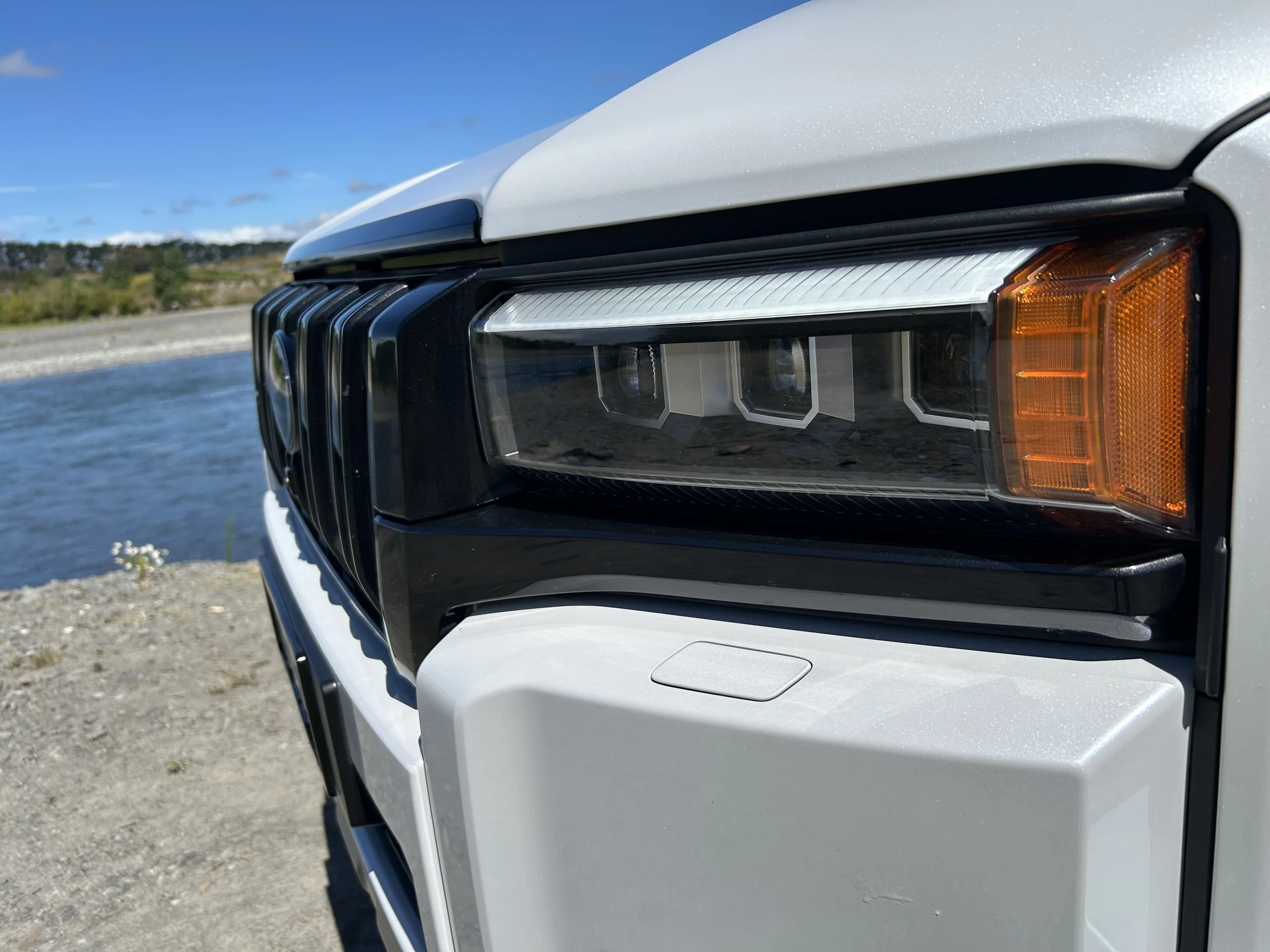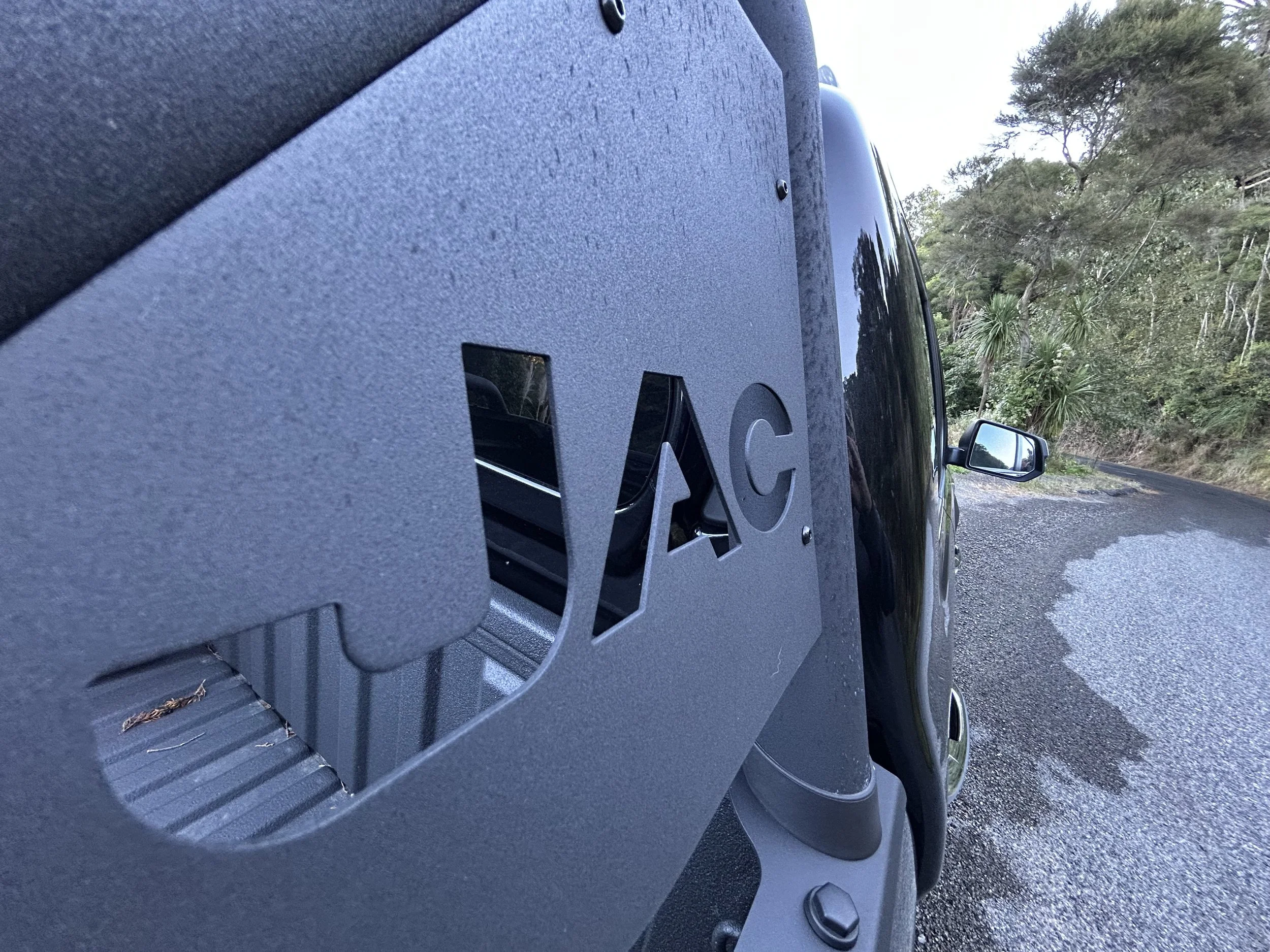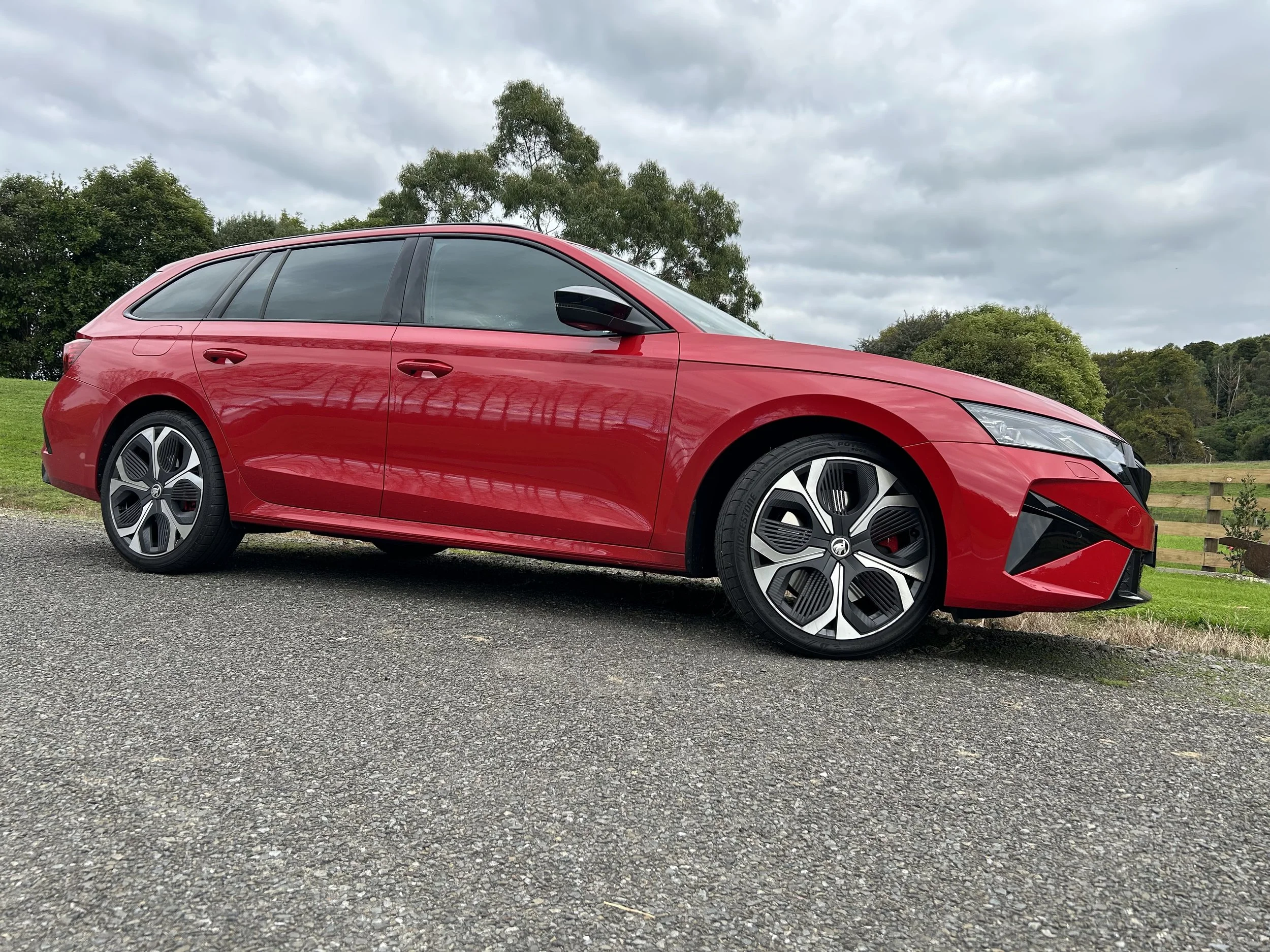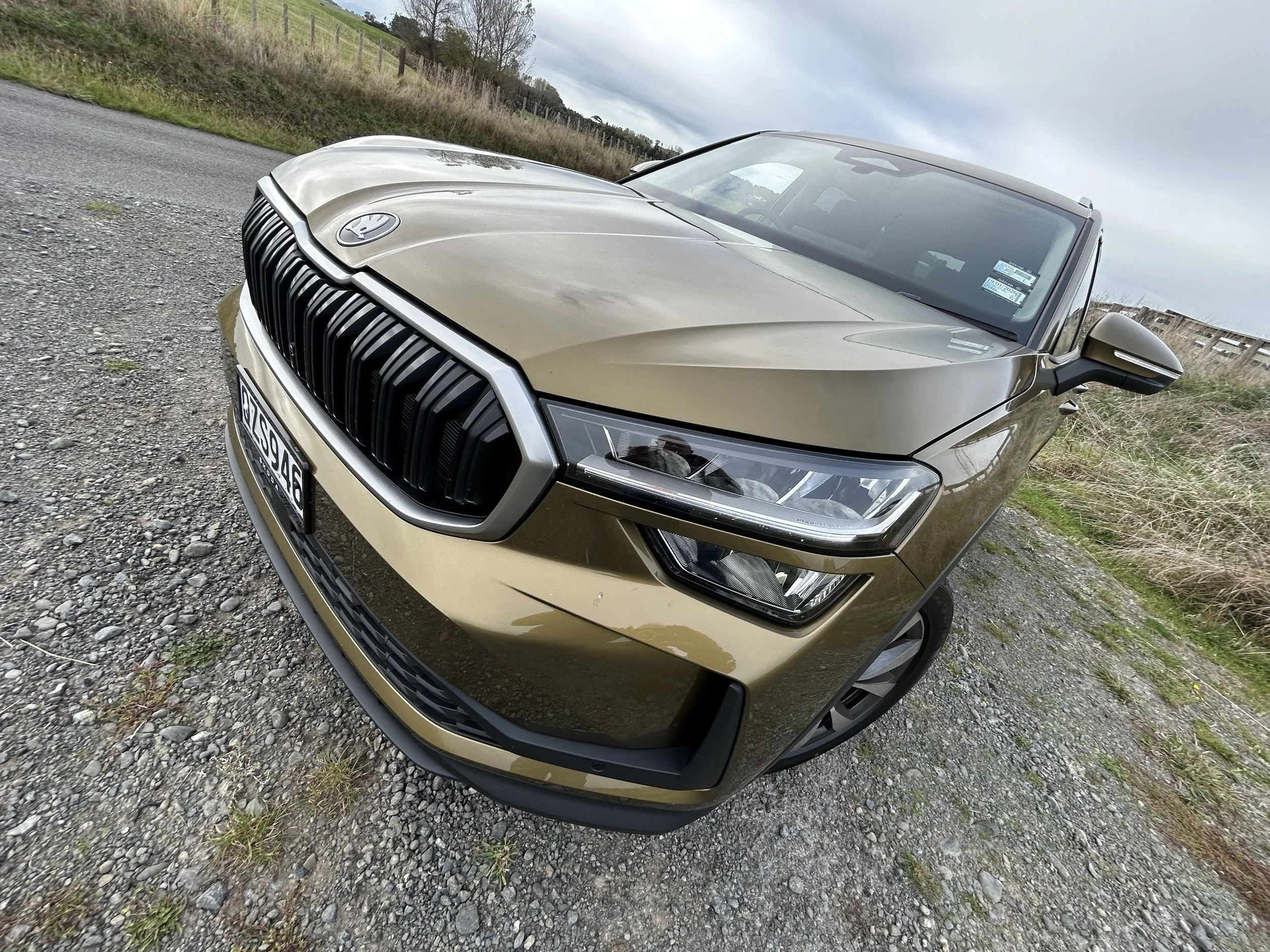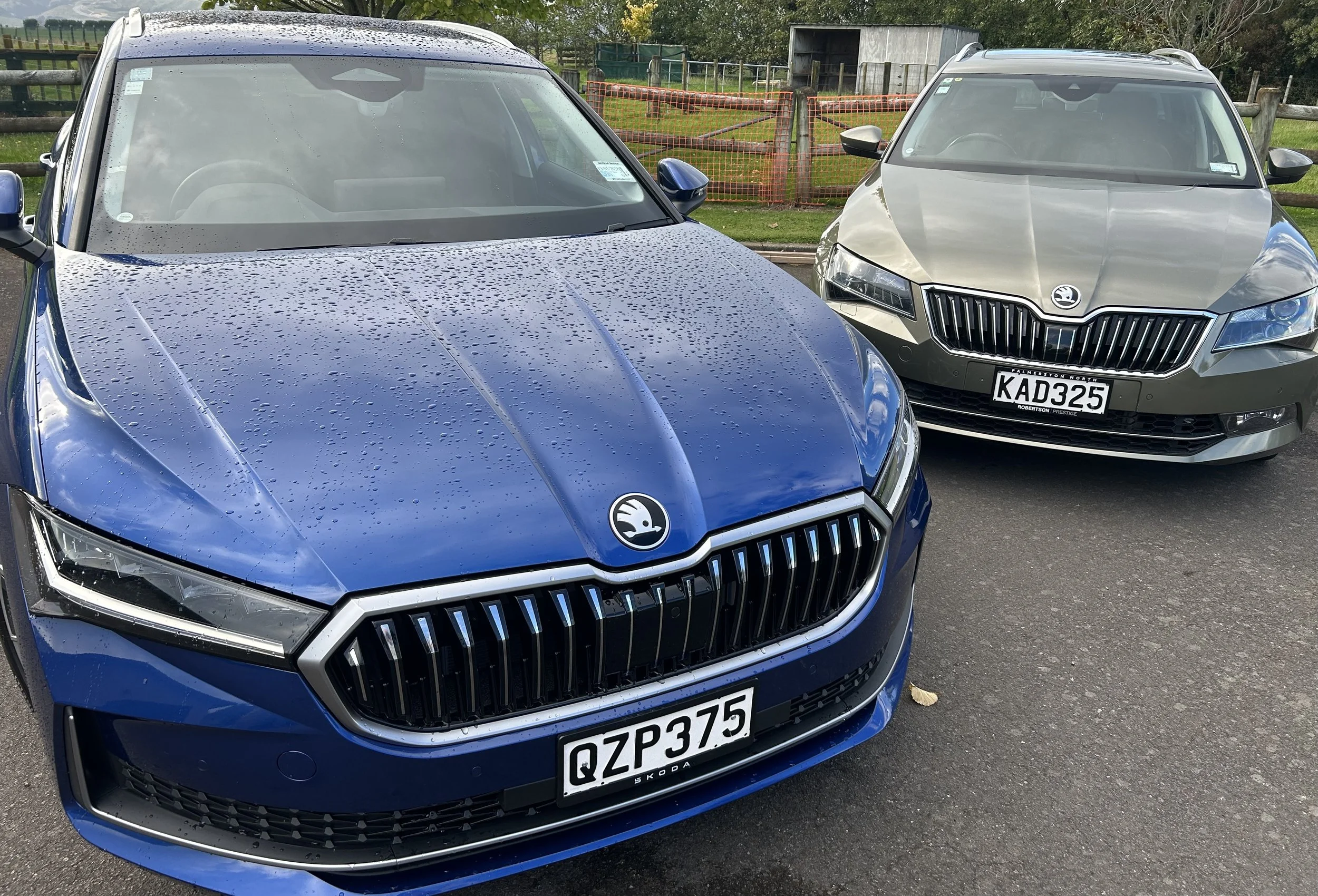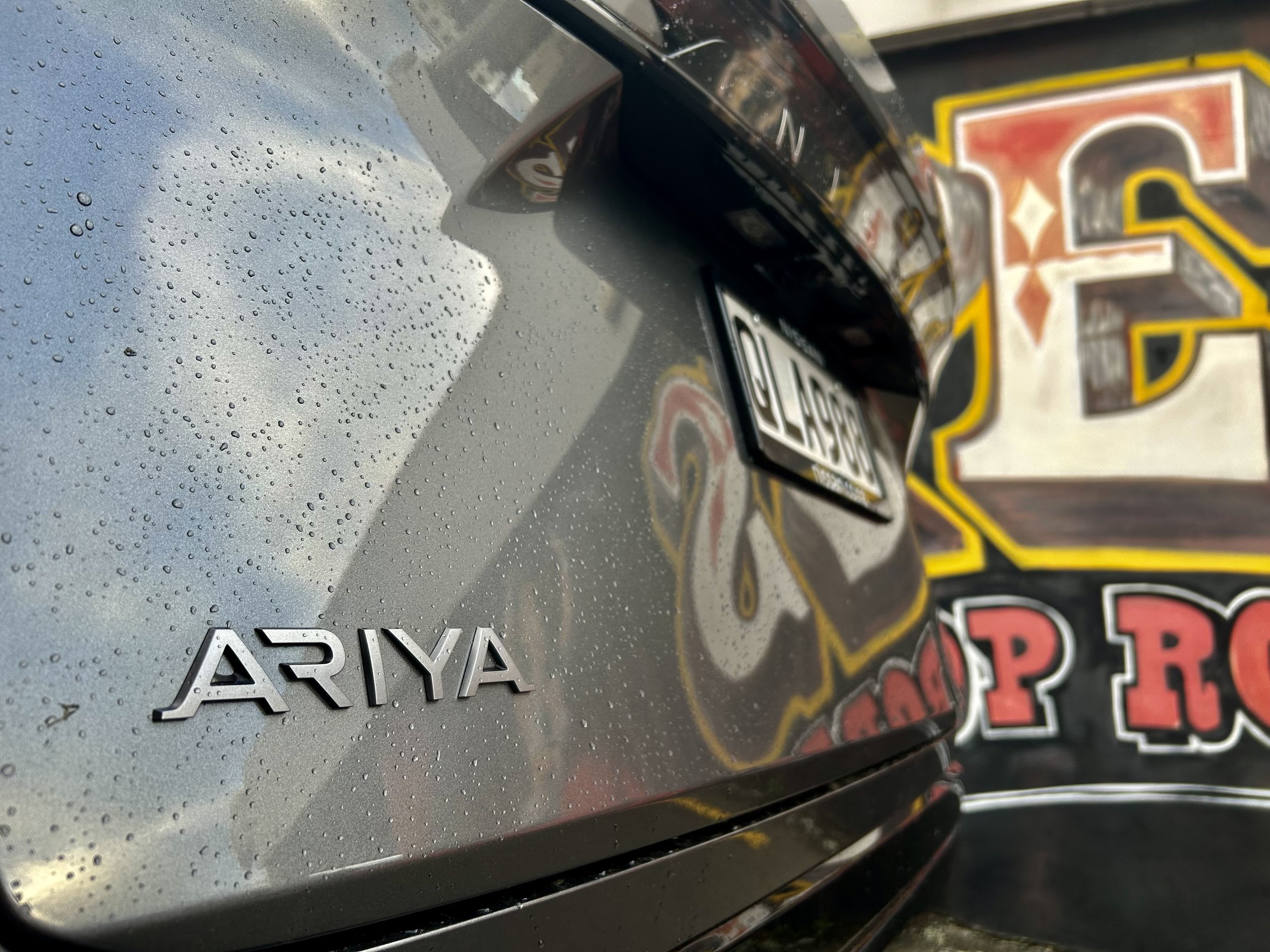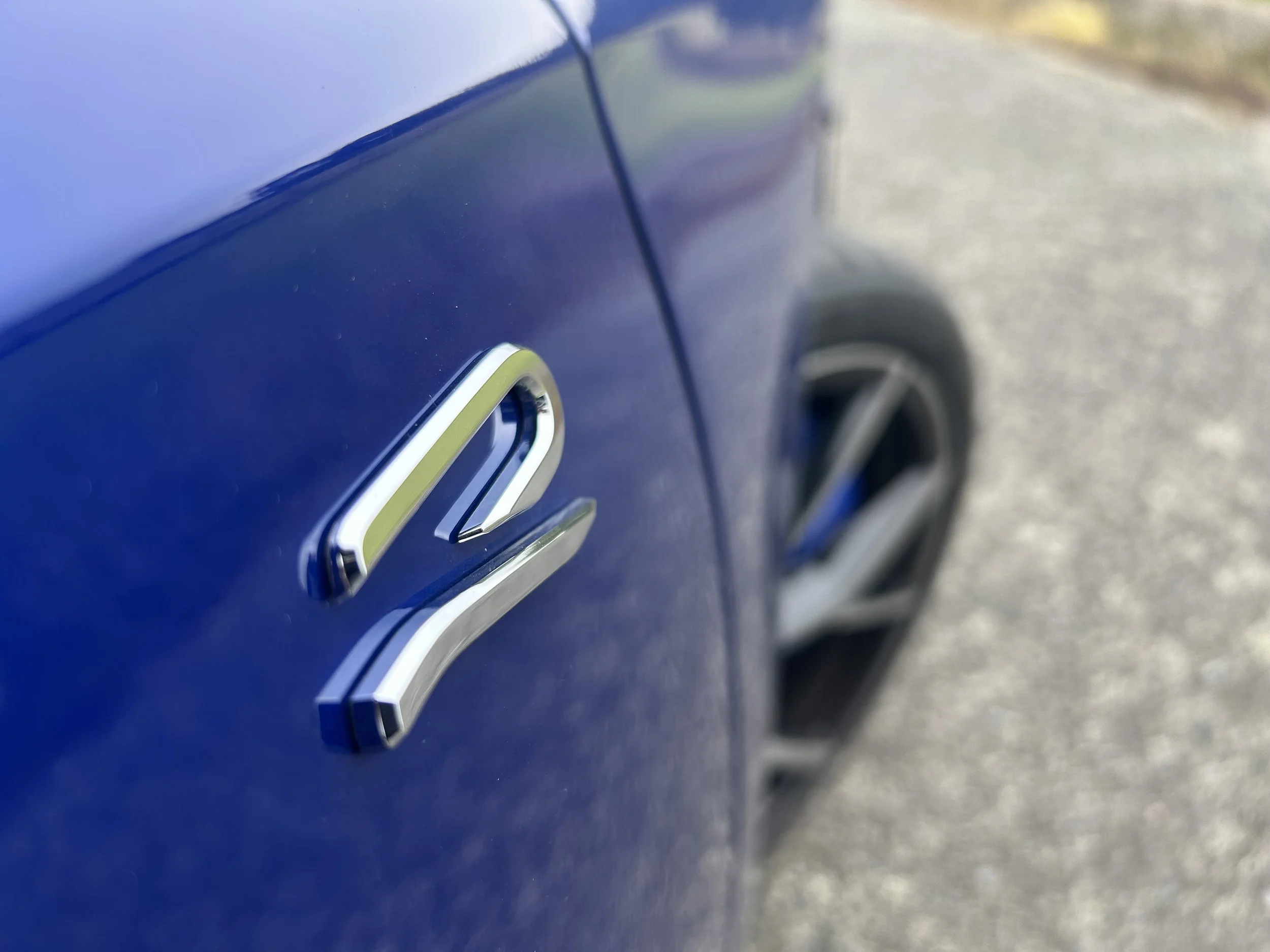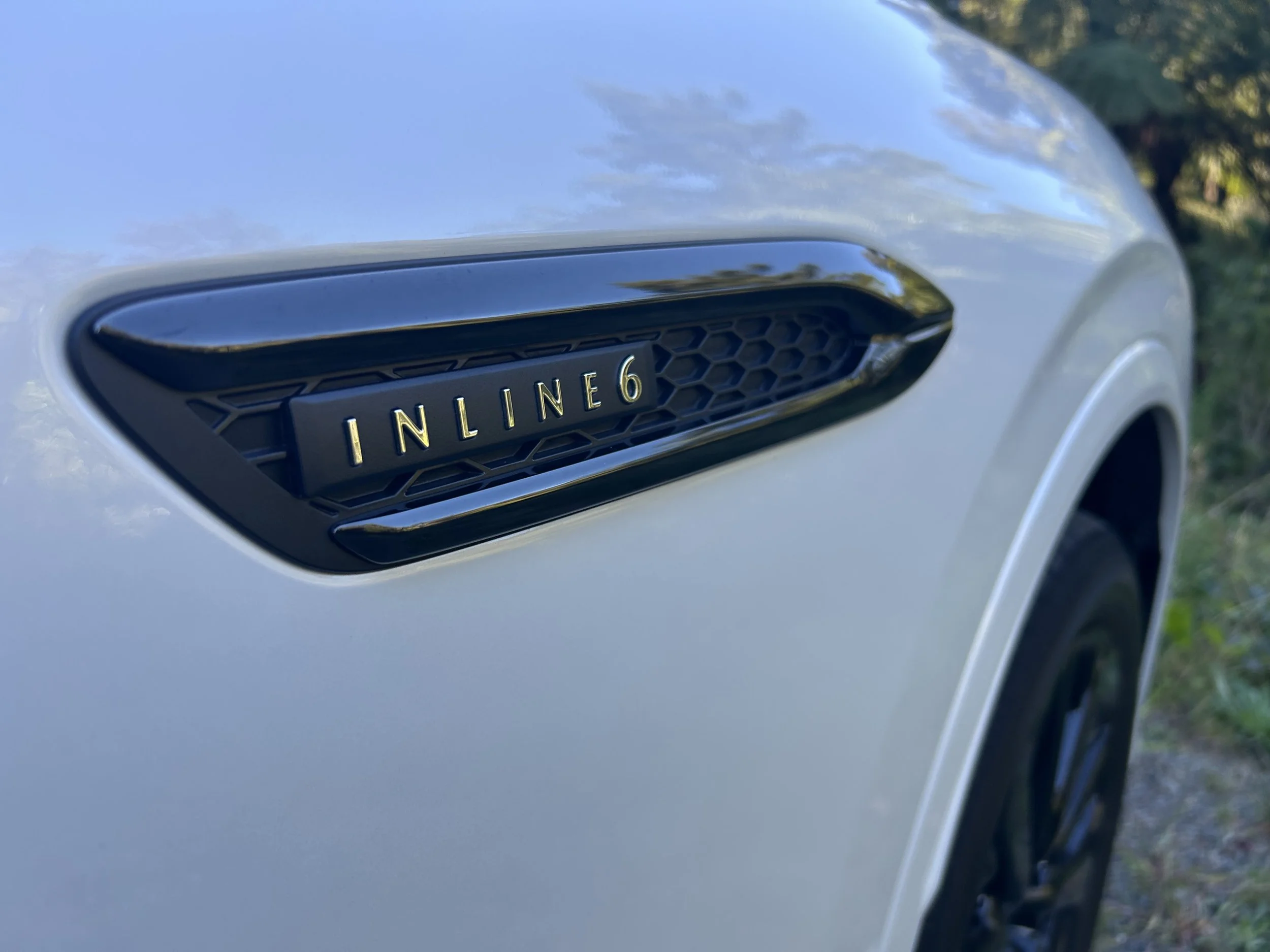Toyota Landcruiser LX/Prado VX roadtest review: Rock of ages
/When the oldest and latest generations of Toyota’s famous mud-plugger site in the same price zone, is it useful to cross-shop?
Prices: Prado VX $93,990; 70-series LX $90,590.
Powertrain: 2.8 litre four cylinder turbodiesel, 150kW/500Nm; eight-speed auto VX, six-speed auto LX.
How big: VX/LX 4990/4875mm long, 1980/1870mm wide, 1992/1940mm tall, 2850/2730mm wheelbase.
For: Engine suits both; Prado redesign a big improvement; 70-Series has true tough-nut aura.
Against: Prado’s compromised rear packaging; 70-Series LX price hard to rationalise given how crude it is by comparison.
LANDCRUISER: No nameplate speaks more strongly to Toyota’s history than this one.
As impressive as it is that Japan’s most rugged and capable four-by-four has a lineage spanning more than 70 years, what’s all the more remarkable is that three generations of this go anywhere legend are still on offer. (Four if you count the Lexus-fied 300 Series).
Latest to arrive is a baby in status but emphatically not size. In replacing a predecessor that held on for a staggering 15 years, the new Prado has been a long time coming.
The VX Hybrid on test is a Malcolm-in-the middle model, one step down from the higher falutin’ six-figure Adventure, one up from the entry GXL. Leaving $10 change from a $94,000 outlay, it has little to fear from rival makes; really just the V6 Ford Everest, perhaps.
Oh, and one other. Another Landcruiser. If Prado’s mission profile is to deliver just as much toughness and dependability as before, with an extra dose of modern tech and refinement for a whole new generation, then the opposite could be true of the 70 Series.
With lineage back to 1984, the oldest ‘Cruiser is patently from another age. Yet it clearly maintains ongoing appeal to Kiwis, given there are seven kinds on sale, against four versions of Prado.
The VX Prado and LX Wagon being so different in how they equip and deliver will obviously influence buyer interests, yet as they place just $3310 apart, the older being the cheaper, even if absolutely cross-shopping doesn’t occur, who is to say there won’t be at least some degree of comparison, if only to be reminded how far this nameplate has progressed in 40 years?
The short answer to that, of course, is: ‘Hugely.’
Prado’s latest square-cut, vaguely militaristic shape takes inspiration from the old bloke’s no-nonsense look, both sharing cues first seen on the famous FJ40, but not as much as it could have.
Familial commonality would have been higher had Toyota NZ adopted the VX with the look it runs with in North America. There you get this rig with a face that replicates LX’s retro-style round headlights and T-O-Y-O-T-A lettering across the grille. Here, though, they’ve selected the alternate of a regular Toyota badge and rectangular bi-LED headlights. The end result is still a seriously imposing on-road presence, but having seen it first-hand in America, I know the ‘classic’ look is better.
Even if they did tie more closely visually, they are emphatically worlds apart in many other ways, particularly in comfort, on-road refinement and equipment provision.
The old-school model is now automatic, and it adopting a six-speed (one that served in the old Prado) might broaden appeal. It also keeps a part-time four-wheel-drive, with all all-paw activations being mechanical. It’s one of the last true body-on-frame four-wheel-drives out there.
Prado has eight forward-driving cogs, is always transferring oomph via all four wheels and uses electronics to enact a wide selection of on and off-seal driving modes. Prado’s design also includes a separate chassis, and is the same platform and wheelbase that underpins the 300 Series, but this TNGA-F platform is way more advanced than 70’s and it’s almost a car now.
That descriptive doesn’t just apply to its build approach, but also how it stacks in safety features, not least in respect to crash mitigation.
Fair to say Toyota has thrown the boat at Prado and done the best it can with the 70. The old boy’s 2022 update to Toyota’s Safety Sense system is welcome. This includes pre-collision with day and night pedestrian and daytime cyclist detection, lane departure alert with steering assist that only works on the brakes and not directly on the Cruiser’s hydraulic power steering, speed-sign recognition, auto high-beam, ABS, electronic stability and traction control, downhill assist control and a reversing camera. Simply integrating what it has must have been a huge challenge for the engineers.
But it does without some aides now insisted upon and has just two airbags to the new type’s eight. Our national independent auditor, ANCAP, has judged the new model to be of maximum five star standard. Whereas 70-Series is unrated.
Beyond price closeness, paths cross in that both ostensibly format for family use, the LX allowing for five people over two rows, the VX seven over three.
The other common link is seen when lifting the bonnets (a heft with Prado, far more of a muscle-building exercise with the 70).
The 2.8-litre four-cylinder turbo diesel that has long-served Hilux (and Fortuner) coming to Landcruiser is, as much as anything else, a CO2 compliance. The 70’s V8 failed Euro 5 standard; this one meets that and step Euro 6, Prado’s unit looking more eco-minded because it requires AdBlue urea, which brings CO2 output to 230 grams per kilometre whereas LX is at 279 (WLTP-3 scale) and also has a 48 volt electric assist, which Toyota insists improves “smoothness, driveability and fuel efficiency”.
Fair call? The engine spins the belt-driven motor-generator, which can charge the battery located under the third row seat. Braking and deceleration can also chip in. Once the battery has sufficient charge the motor-generator can push out an extra 8.5kW and 65Nm, designed to assist low-speed acceleration.
In practice? It seems to deliver a slight lift in low-speed response and acceleration; what’s most obvious, though, is the new idle-stop system that turns off the engine when stationary. All the same, it’s hybrid with a small ‘h’ by today’s standard and while Toyota NZ includes the word in its model naming, it’s perhaps telling that the vehicle itself comes from Japan without any badging relating to this.
Also, Toyota hasn’t raised overall power and torque figures from the non-mild hybrid version in the 70, so the official figure is still 150kW (at 3000-3400rpm) and 500Nm (at 1600-2800rpm), which in 70 context means the 2.8 is 1kW more powerful than the retired 4.5-litre V8, but delivering 70Nm more torque.
Fuel burn? With my running, Prado’s overall average was 1.2 litres per 100km shy of its cited optimal economy and LX came in just 0.6L above it’s factory figure. Refuelling won’t be everyday as both have huge fuel tanks - 110 litres Prado, 130 litres 70. What you do notice is how frequently this engine goes into its DPF cleansing routine.
Four-cylinder life for the Prado is not new, but for the 70 it’s a big change. What might also elevate some apprehension is that it appears to be the larger of these two Landcruisers. Can such a small engine pull its weight here?
For sure, these are substantial machines. Comparison of gross vehicle weight - that is, the total weight in fully loaded form - shows Prado at 3200kg, LX at 3060kg - whereas the heaviest Hilux is 3050kg. The Prado is it’s 5mm longer and 10mm wider than the LX, and while the LX is substantially taller - enough to make entering and egressing a parking building slightly nerve-wracking - that’s all to do with its additional ground clearance, 290mm against 215mm. In body dimension, Prado is higher roofed, by 52mm. It also has a 120mm wheelbase advantage.
So those are the stats. Conceivably, which you’d go for might come down to where you might be thinking about taking them. It’s hardly fair to call one the city choice, and the other the country, because Landcruisers are always designed with off-roading aptitude as a primary skillset.
In all probability, for 95 percent of the time or type of terrain, Prado will match its ancestor; it’s maybe going to be the final five percent where 70 will have an edge. I cannot be sure because no absolute off-road test to the death occurred. For sure, both were taken off-seal, and into an area I use for general aptitude appraisal. But circumstance and timing didn’t allow for either to undertake a pukka wilderness adventure.
In saying that, only Prado remains the unknown quantity. The 70 is a vehicle in which I’ve been there, done that previously. You need look at it to see why it remains one of the most modified and customised 4x4s in this part of the world.
I know it to be amazingly tough, incredibly rugged and astoundingly reliable. I would expect it to be more bash-resistant, simply because it has with less brightwork to blemish or bits to bend than the Prado.
The newest ‘Cruiser equips with a dual-range transfer case, enabling high (for regular driving) and low (for off-roading) ratio gearing. As said, it’s a full-time 4x4 driveline with a Torsen locking centre diff and a locking rear diff too. Both are activated at the touch of a button and you can also swing through half-a-dozen off-road modes.
Toyota gear is good, but for some there will be still something even more reassuring about the 70’s old-school lock’n load. The other consideration is the footwear. To put a Prado onto the 70’s standard mud-cut rubber means visiting an after-market agent.
The other test of these model lines’ mettle is towing. That’s where Prado now steps up. The old model was rated to 3000kgs, the new is good to haul 3500, a rating the 70 has long held.
A mate’s call for assistance to haul a battered race car to a new owner was a Godsend. A day to get there with around two and half tonnes on the hook, a day back with the empty trailer. Perfect for a Landcruiser.
Perfect, too, for the Prado. But that’s not how the cards fell. The trip had to be undertaken during the 70’s period of stay. A good drive? You’d call it entertaining and illuminating. Very much a trip back into time.
In terms of how it performed, no complaints. Sure, those who have enjoyed that sweet V8 diesel engine grumble might at times raise an eyebrow to the four’s somewhat different aural tone.
One particular signature specific to the 70 is an occasional little ‘woof’ that seems to synch with with gear changes under load and I’m pretty sure it’s a sucking sound from the standard air intake snorkel.
Other than this, saying that the four-cylinder engine feels lively compared to the V8 is true, yet requires context. A 70 is not designed for speed. And ‘speed’, in context of a 70, is anything much over 100kmh; quite different to Prado, which is far more relaxed and capable.
Nonetheless, as much as it does best when allowed to lope along, the four-cylinder is willing to get up and go, generally keeping up with traffic.
The LX’s Aisin auto matches confidently it’s designed to lend fore and aft manual gear selection (though it’s surprising how little use that function asks for). But the VX Prado’s eight-speed is simply superior; crisper, cleaner shifts, better step off from standstill and when overtaking.
You can drive the Prado far more assertively, too. It’s more stable and composed than not only the 70 but also the previous Prado; which delivered no aspirations of being ‘sporty’ or ‘agile’. The body structure now being 30 percent stiffer and the chassis being 50 percent stiffer is in itself a huge change for good. The electric power steering is also a positive in making Prado feel smaller and more manageable than it looks.
Less weight over the front-end is likely good for the 70’s steering, but it drives exactly like what it is – a very tall, heavy lane-filler/blocker. The coil front and leaf rear suspension is relatively stiff by modern standards, and certainly more agricultural than Prado’s updated double-wishbone front and four-link solid rear axle suspension.
A 70-Series quirk that hasn’t changed is the disparity between front and rear wheel tracks; with the front 95mm wider than the rear. This means the rear tyres are not following in the tracks of the front tyres, which likely adds to its quirks.
Overall it’s a swaggering, easily-swayed wagon that asks a lot more patience and perseverance from a driver. The nostalgia is great, but it wears off quickly in distance driving. Whole the Prado didn’t clock the same kays, it was also taken into distance driving and was just … easier, more relaxed.
It’s not just that the driving per se that demands higher levels of involvement when going old style. As much as it offers plenty of headroom and great vision from its glasshouse, the 70’s upright cabin generates such huge wind noise around the A- pillars the audio is often fighting a losing battle.
While the seats are good, the driving position solid and it has all the fundamental comfort features, only some of what you see - like those back-to-round headlights (with LED DRLs) and the new instrument binnacle with a digital speedo - is a intentional design throwback to elevate a retro vibe, while other elements (notably the ventilation controls) are original implementations they have’t bothered, or been able, to change.
One mod-con that struggles is the infotainment; it entertains wired Apple Carplay and Android Auto via a USB-C port most begrudgingly; I tried three tried and trusted cables for my iPhone to get one to work. That it actually even has a USB-C plug was a surprise. BTW, the Prado has eight. A parking camera in a 70 is new and novel, but it’s a poor thing compared to Prado’s, which lends a sharp 360-degree overhead view and multiple front and rear angles. Navigating tight spaces is much easier in the new choice.
Just a cursory glance is enough to cement impression that Prado’s interior, in design and equipment provision, does much to far more easily justify its price tag. It’s likely no less robust in respect to material selection than the old jigger, but is also properly modern.
Those dual 12.3-inch digital screens are a major step forward; a shame about the menu system being so clunky. The lack of a home screen is also odd. Still, the displays are coherent and, the one ahead of the driver delivers plenty of useful info beyond the norm; fuel economy, hybrid data, and off-road stats all show up. Everything from the chunky air vents to the grab handles (the 70 lacks) feels designed to last. Again, you get square, upright windows and high driving position, but it’s less awkward to get in and out of the driver’s chair.
Storage is a bit underwhelming in both types; the Prado has proper cupholders but, as in the 70, the door pockets and glovebox are tiny. There’s also no sunglasses holder and while the wireless phone charger is a mod con denied the 70, it takes up a big chunk of space in the centre console.
Second row seat comfort is better considered in Prado, save that sliding ability isn’t considered. There's a good amount of comfort through the seat base and backrest, which is tilt-adjustable. plus you get air vents in the roof.
Prado being on TNGA-F allows it to finally have what customers have long called out for; a third row seat.
The positives are that this row also achieves amenities like air vents and cupholders, and visibility is good. The seats themselves are comfortable, though as is often the case are more suited for kids than for adults. What will also put full-sized folk off from being in the back is that the access and egress path past the tumble-forward second row will be awkward unless you have gymnast-like flexibility.
If you want a Prado with decent rear storage, you might prefer the incoming five seater instead of the three row edition. With the latter, there are sorts of compromises.
For one, with all seats in use, you almost completely lose boot space. It has just a piddling 182 litres, mostly within the weirdly flimsy rubber-lidded storage cubby. Some compromised two-seater sports cars have more.
Lowering the rear seats away creates 954 litres’ space, but the compartment is not brilliant, as the load space is all above the folded rear seats, so it’s high.
Because of the hybrid battery? Well, yes, but specifically because of the hybrid battery we don’t get. In the US, the Prado has a larger pack than here. The design as we see it is to accommodate this, regardless that it’s not relevant to NZ.
You’d achieve a lower load floor from unbolting the rear seats. But that’s not easily possible. So you’re left instead with a load floor that is potentially awkwardly high so for those of less than average height and not wholly friendly to loading. During our time with the 70, I had to pick up a new BBQ. It came disassembled in a box that, though largish, fit easily behind the old rig’s back seat. It simply would not fit into the Prado.
The design is a shame because, in so many other ways, the area is well provisioned - LED down-lights, tie-down points, a 220V power socket and underfloor storage - and the split, now vertically opening, tailgate is neatly done, much more convenient than the LX’s side-hinged 30-70 split barn doors, the bigger side of which carries a full-sized spare wheel. Prado has one of those as well, but it’s tucked under the chassis.
Which to go for? It’s not hard to pick because the answer is so blindingly obvious.
The 70-Series wagon is the most authentic edition of this iconic off-roader around, and some will love the heritage side to it. But frankly it’s just too pure for everyday consideration unless the place you live is so remote, and so hard to access you need all that talent to get there.
If you use a Landcruiser as most do; mainly for road driving and family use, occasionally for off-road play, the Prado is emphatically the better idea. It’s not a whole lot less adept in extreme use and is so much more comfortable, so much safer and will be a bit cheaper to run.

